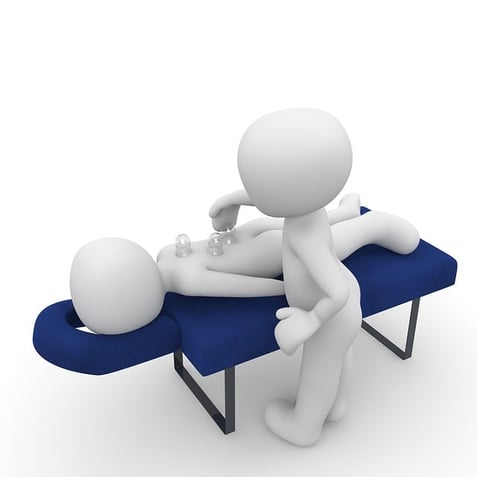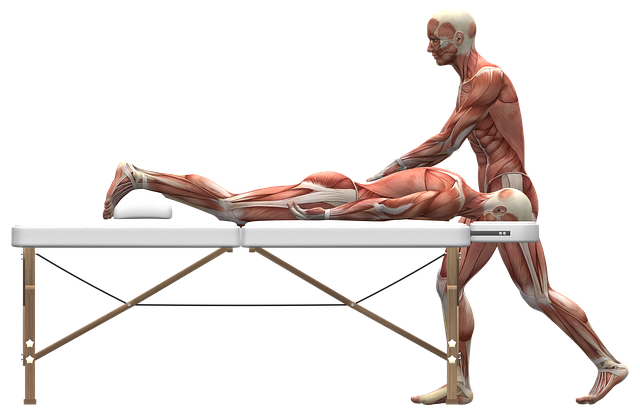December 11, 2023
OT vs PT: Occupational and Physical Therapy Explained
If you're a physical therapist (PT), you probably know all about the various styles, methods, and techniques used in physical and occupational therapy (OT). Both types of therapy aim to improve patients' physical health, mobility, and overall quality of life. But how do these different approaches interact with each other? What are OT and PT's specialized domains, distinctions, and synergies? And is there a need for an OT vs. PT debate?
This article will explore these questions and provide insights on how both therapy approaches can work in tandem.
Exploring PT vs. OT Practices: A Professional Insight
Physical Therapy
The strategic goals of PT can vary based on the practice, the individual, and the business objectives. However, in a general overview, the goals primarily focus on restoring the patient's movement, strength, and range of motion. The aim is to restore these elements and prevent further deterioration while enhancing the body's overall functionality.
The PT industry caters to various conditions, including joint and neurological issues, post-surgical recovery, and pain management. PTs utilize a broad spectrum of therapy techniques to address these varied conditions.
These techniques range from:
- Targeted exercises
- Stretching routines to hands-on manipulation
- Additional modalities (ultrasounds, traction, heat therapy)
Most PT practices thrive in dynamic settings that include outpatient clinics, inpatient facilities, schools, home health agencies, and fitness centers. The variety in PT practice settings allows for accommodating the unique needs of patients and delivering high-quality care in environments that are most conducive and comfortable for them. If you're overwhelmed with manual admin work in your practice, let's chat!
Occupational Therapy
As discussed with PTs, the strategic goals of an OT can vary depending on similar factors. Strategic goals generally focus on maximizing an individual's ability to perform daily tasks. The aim is to promote independence and improve the quality of life for those facing physical, psychological, or developmental challenges. This approach also involves educating caregivers on effective support strategies for continuous care and progress.
OTs address a wide range of conditions in their work.
These include:
- Psychological and developmental issues
- Post-surgical recovery
- Pain management
The therapy techniques are comprehensive and designed to meet the unique needs of each individual. OTs assist patients with daily activities, conduct environmental assessments to identify potential hazards or barriers, and teach them how to use assistive devices for added independence.
The practice settings are diverse and adaptable, catering to the specific requirements of OT patients. Various environments include outpatient clinics, inpatient facilities, mental health facilities, schools, and home health agencies. This allows for personalized care in settings for maximum care and comfort.

Details of the OT vs. PT Debate
While there are similarities within these professions, let's explore why there seems to be a rivalry between OT vs. PT pros. By understanding their unique roles and contributions, one can better understand what sets these two therapists apart in providing comprehensive, patient-centric rehabilitative care.
Key Distinctions
Difference between OT and PT: Clinical focus
One of the key distinctions between OT vs. PT professionals lie in their clinical focus.
PTs: Primarily concentrate on improving movement, mobility, and physical function. They utilize targeted exercises and physical activities to enhance patients' ability to move and perform bodily functions effectively.
OTs: Target daily tasks focusing on enhancing fine and gross motor skills. Their goal is to improve an individual's ability to perform activities of daily living, promoting independence and a better quality of life.
Difference between PT and OT: Treatment spectrum
Regarding the treatment spectrum, PTs vs OTs have different areas of expertise.
PTs: Apply their skills for mobility enhancement, pain management, and recovery from various conditions. These conditions often include neurological and joint issues where physical function and mobility are compromised.
OTs: Utilized for conditions that affect an individual's ability to carry out daily tasks. They deal with psychological or developmental issues and assist in the recovery process from surgery or injury.
Basically, both professions (PT, OT) are involved in rehabilitative care, but they have different targets and treatment methods. Both professions are vital in delivering holistic patient care.
Now that we've discussed their differences, let's transform the OT vs. PT dynamic into a collaborative partnership rather than a rivalry.
Crucial Synergies
Integrated Patient Care
Given the overlap in the conditions they treat, PT and OT specialists have the potential to collaborate seamlessly. This collaboration allows for a more comprehensive approach to rehabilitative care, ensuring that all aspects of a patient's recovery and rehabilitation are addressed.
Shared goals and monitoring patient progress
Both OTs and PTs work towards common objectives when treating their patients. They monitor the progress of these goals closely and adapt their treatment plans as necessary. This joint approach ensures a holistic view of patient well-being. It allows for integrated care where a patient's physical, psychological, and functional aspects of health are considered and treated.
This collaborative approach fosters better patient outcomes, making the synergistic relationship between OTs and PTs fundamental to successful rehabilitative care.
Harmonizing Patient-Centric Care: Collaboration Between PTs and OTs
Collaboration between PTs and OTs enhances patient-centered care. The goal is to improve patients' quality of life through a comprehensive rehabilitative approach addressing their overall well-being.
Professionals from both domains can maximize their impact by recognizing each other's strengths. A PT's focus on improving physical function and mobility complements an OT's emphasis on enabling individuals to perform daily tasks independently.
By contributing their unique skills to a unified approach to patient care, PTs and OTs can ensure that their patients receive the most comprehensive and effective treatment. This collaborative approach fosters a more holistic view of patient health, improving patient outcomes and a higher standard of patient-centric care.
Elevating Practice with PT Management Software: A Unified Approach

In modern healthcare, using specialized PT management software can greatly enhance the practices of both therapists. This technology provides a unified approach to managing patient care, streamlining processes, and enabling more precise and efficient service delivery.
Treatment Planning
With automated tools, therapists can create personalized therapy plans tailored to each patient's needs. This ensures precision in addressing specific conditions and recovery goals, leading to more effective treatment outcomes.
Billing Precision
The software makes billing processes a breeze, minimizing errors and ensuring prompt reimbursement. This feature is a win-win for PTs and OTs, lightening their administrative load and enhancing financial management in their practices.
Progress Monitoring
The software also has your back regarding keeping track of progress. It lets you easily monitor how patients are doing so you can make data-driven adjustments to their treatment plans. Plus, it generates detailed progress reports to give you valuable insights into their recovery journey.
Appointment Management
With the help of integrated scheduling features, both providers can effortlessly manage appointments, ensuring a seamless and efficient patient experience. This improved management enhances patient engagement and satisfaction, as PT/OT professionals can optimize their time, minimize wait times, and provide personalized care.
Documentation Practices
With centralized electronic documentation, therapists can easily access, update, and share patient records. This boosts the flow of information and ensures everyone is on the same page with the rules and regulations.
By integrating PT management software into their practices, PTs and OTs can improve service delivery, optimize patient outcomes, and enhance operational efficiency. BTW, PtEverywhere offers a comprehensive patient management platform with all these features and more! You're welcome! ;)
Synchronizing Professions for Optimal Patient Outcomes
Whether you're a PT or an OT, your occupation significantly impacts the patients you treat. Understanding the collaborative potential and nuances between these therapists ensures a unified and patient-centric approach to rehabilitative care, improving the quality and holistic view of patient health and recovery.
Moreover, integrating PT management software into these professional practices can optimize patient care and outcomes. This technology enhances treatment planning, billing processes, progress monitoring, and appointment management, improving operational efficiency in PT and OT practices.
By collaborating effectively and embracing technological innovation, PTs and OTs can work together more efficiently. This ultimately results in healthier lives for their clients, with less physical pain involved.
Hopefully, the OT vs PT debate can be put to rest now.


